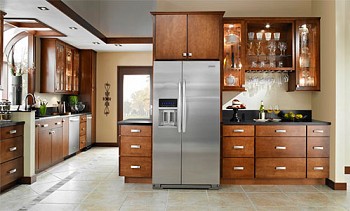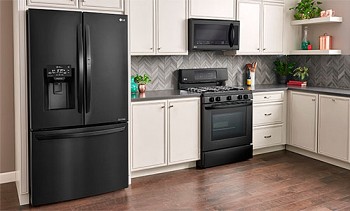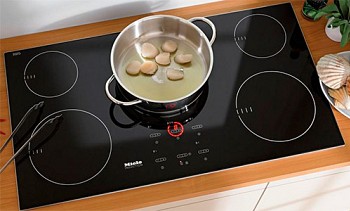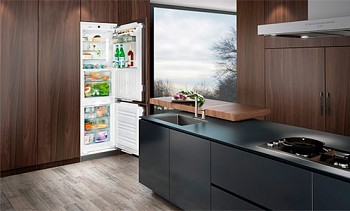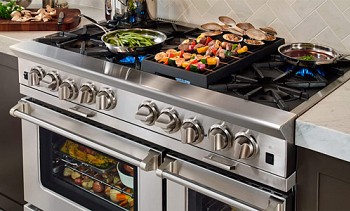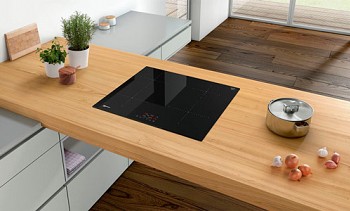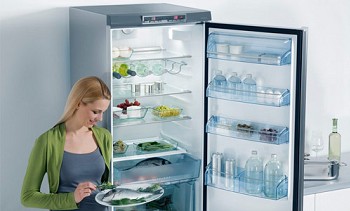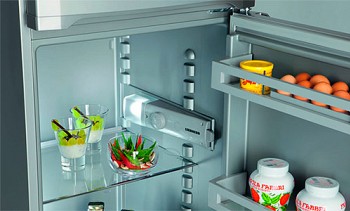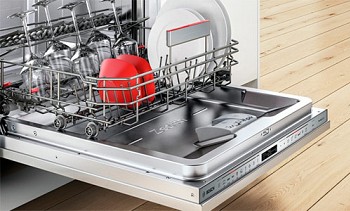Despite the intensive development and improvement of electric and induction stoves, gas stoves still do not lose their popularity and still remain in demand. Practice shows that the vast majority of residents of gasified houses today, as before, give preference to gas stoves. This is not surprising, because gas stoves allow you to cook food faster, and the taste of dishes cooked on fire is more pronounced. And most importantly, there is significant energy savings.
Cookers are large-sized, expensive and rarely out of order equipment. That is why it is extremely rare to talk about replacing them - as a rule, only during relocation or overhaul, associated with the updating of all household equipment. As a result, the buyer is unprepared for the choice: he does not know how the plates have changed over the past decade, what functions modern models have, what to look for when buying except the price tag.
We will try to help all those who are faced with the need to purchase new kitchen appliances, and tell you how to choose a gas stove with a good oven.
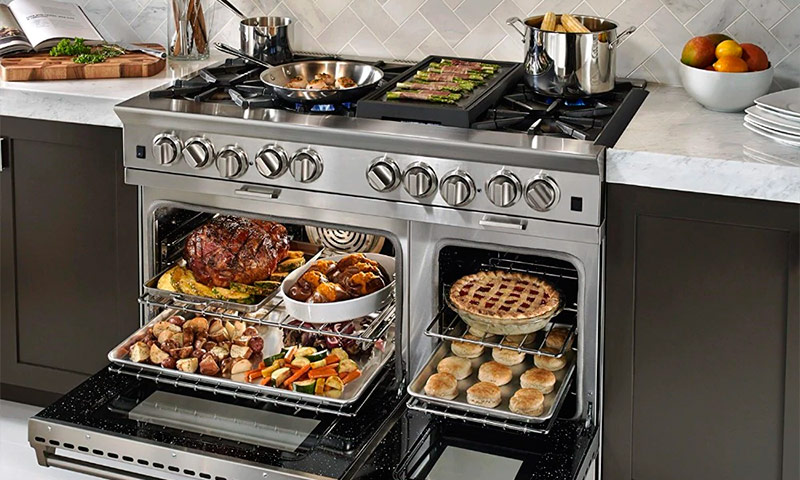
Types of gas stoves
The first thing you have to do when choosing a stove for the kitchen is to decide on its type. Do you want it to work exclusively on gas, or is it better to prefer a certain combination of gas and electricity?
Gas hob and gas oven
Models of stoves, in which both the hob and oven work on gas, are very popular. In our country, gas tariffs are still significantly lower than for electricity, and many users rightly believe that it is a sin not to use the cheapest source of energy to the maximum, if possible.
In addition, a full gas stove, as a rule, is cheaper than a combined model of about the same level and from the same manufacturer.
For savings, you have to pay a lower level of convenience, because in a gas oven there are no:
- top heat;
- a fan for even distribution of hot air inside the chamber;
- low temperature operating modes;
- precise temperature control.
However, true cooks are ready to put up with these restrictions, and with a lot of soot, issued by a fully gasified stove, for the very possibility of cooking on fire.

Gas stove with gas oven.
Gas hob and electric oven
A gas stove with an electric oven is the golden mean between profitability and ease of use.This option, on the one hand, allows you not to spend expensive electricity on the daily preparation of lunches and dinners, but, on the other hand, leaves you the opportunity to enjoy all the advantages of modern electric ovens (precise temperature control, convection, grill, etc.) for creating true culinary masterpieces.
When purchasing a gas stove with an electric oven instead of a fully gas oven, be prepared for an increase in electricity bills. In addition, the installation of such household appliances will require your application of energy and a waste of time: with a high probability you will have to lay a power cable.

Gas stove with electric oven.
Combined Cooktop
Cookers, on the hob of which gas and electric hobs peacefully adjoin, are much less common, but there are some. The owners of country houses using gas cylinders are of particular interest: even if the gas in the cylinder runs out earlier than anticipated, you will not be unable to prepare a hot lunch.
The ratio of gas and electric burners is usually 3: 1 (less common are models with two gas and two electric burners). Since the power of one electric element is small, stoves with a combined gas-electric hob usually do not require a special electrical connection.

Combined gas stove.
Sizes of gas stoves
All gas stoves produced, with very few exceptions, have a standard height of 85 cm. The depth can vary, but not very much, from 50 to 60 cm. But there are a lot of variations in the width of the device, and there is plenty to choose from.
The most popular and common option is slabs with a width of 50 and 60 cm, however, if you wish, you can find a super-slim 30-centimeter model, and just a huge one, the width of which will reach 90, or even 120 cm. The wider the slab, the larger the number burners can be placed on its surface.
The dimensions of the stove that are optimal for you are determined by the area of the room, the available or planned arrangement of furniture and the estimated intensity of use of the appliance, which in turn depends on the size of your family.

Gas stove 30 - 40 cm.
 Gas stove 50 - 60 cm.
Gas stove 50 - 60 cm.

Gas stove 90 - 120 cm.
Hob material and stove body
The hob of the gas stove can be made not only from the usual enameled steel, but also from stainless steel or glass ceramics (heat-resistant glass). Each of these three options has its own characteristics, its own advantages and disadvantages. Whether the new stove will look beautiful and stylish, and whether it will be practical at the same time, depends primarily on the choice of hob material.
Enamel coating
Enameled coating is what we used to see on old boards. Today, such a hob continues to be the most common.
The main advantage of stoves, the hob and the body of which are made of enameled steel, is the low price. Enamel looks simple, and in operation it is not the best option.
- At first, enamel coating is impractical in terms of resistance to chips.
- Secondly, low-quality enamel can be quite porous, and over time it becomes high-quality when using aggressive detergents. Being porous, it gets dirty faster and hardly launders.
- Thirdly, over time, scratches appear on the enameled coating, especially if abrasive substances are used when cleaning. Without them, it is sometimes very difficult to clean the surface of dirt that inevitably appears during cooking.
Today, however, you can buy not only a white plate, but also brown or black - the last traces of drops of fat and soot from the flame will not be so evident.

Enameled gas stove.
Stainless steel
Stainless steel used for the manufacture of hobs and gas stove cases can be either brushed or polished. A stainless steel plate looks very impressive and stylish, and it’s easier to take care of it, according to many users, than an enamelled one.
Cons of such models, of course, also exist.
- At first, it is impossible to use any household chemicals that are at hand to clean stainless steel surfaces - only special tools are suitable.
- Secondly, on such surfaces, traces of dried drops of water and fingerprints of the mistress are clearly visible. In order for the stove to continue to look as spectacular and beautiful as immediately after the purchase, you will have to spend a lot of time daily on putting gloss on.

Stainless steel gas stove.
Glass ceramic
Glass ceramics as a material for the manufacture of cooking surfaces of stoves has long ceased to be something extremely rare and unusual. Such plates look especially beautiful and spectacular and do not lose their attractiveness over the long term. They are easy to care for, not afraid of mechanical damage and temperature changes.
You have to pay for the opportunity to possess such a stylish and spectacular stove. And not only the ruble (of all gas stoves, stoves with vitroceramic hob are the most expensive). The owners of "glass ceramics" sometimes complain about its other shortcomings.
- At first, the sides of the glass-ceramic hob, as a rule, are absent, therefore, if its contents accidentally “run away” from the pan, you will have to wash not only the surface of the stove, but also its facade, and maybe even the floor next to the stove.
- Secondly, glass ceramics "does not like" sweets. Spilled sugar syrup (jam, compote, etc.) should be removed immediately, without waiting for the surface to cool, otherwise you will have problems.
- Thirdly, special tools should be used to clean the glass-ceramic hob: it is not recommended to use abrasive powders to avoid scratches.

Glass ceramic gas stove.
Hob
Pots and pans are not placed on the hob itself, but on the grill above it. For the manufacture of such a lattice, either steel or cast iron is used. The steel grill is stronger and cheaper, but has a short life - in 5 years the steel burns out.
Cast iron is heavier and looks somewhat bulky, but it is guaranteed to last at least one and a half decades.

Cast iron gas stove grill.
Gas stove burners
When choosing a cooker, you can not ignore such parameters as the number of burners, their size and type. Here, the mistress must say her weighty word in the dispute about which gas stove to choose. At the same time, she should start first of all from how often and in what volumes she cooks.
Number of burners
Traditionally, gas stoves are equipped with 4 burners. The latter often have different sizes, which allows you to find the best option for utensils with any bottom area. As a rule, in this case on the hob there are two medium-sized burners, one large and one small, suitable, for example, for making coffee in a Turk. Large and small burners are usually located nearby.

4-burner gas stove.
Four-burner stoves are the most common option, but not the only one. Narrow models of gas stoves are usually equipped with two burners. Such appliances may be of interest to single people or families of two, rarely cooking at home.They are bought in cases where the kitchen is so small that there is simply no place for a full-sized stove, and also as an inexpensive option for a summer residence.
It is extremely rare, but there are gas stoves with three rings located in one row. You can cook on them in three small pots, and by turning on the burners at the same time, on a narrow long baking sheet.
Five to six burner models are available today. They cost more and take up much more space, but they make it possible to cook several different dishes at the same time.

5-ring gas stove.
In addition to stoves with classic round burners, customers are now offered models with oval, square and even triangular burners. Here, your choice will depend entirely on your taste.
Special types of burners
1. Quick heat ring
Modern premium class gas stoves are often equipped with multi-circuit burners with two, three and even four rows of flames. They are intended for superfast heating or cooking. Such a heavy-duty burner allows you to cook food in a large-capacity pan without spending half a day on it, very quickly boil the kettle, cook steaks, with a crispy crust on the outside and tender inside, etc.

Hot-plate burner.
2. Cooker Wok
The wok burner is designed for lovers of Asian cuisine and those who want to eat tasty, but right. It can be considered as one of the varieties of instant cooking rings. However, a wok is not just a powerful burner with two or three rows of flames. The flame should not only be intense, but also correctly directed.
Equally important is the shape: the wok pan has a convex bottom, and this should be taken into account in the design of the correct wok burner.

Burner wok.
3. Coup de feu
Coup de feu is a thick cast iron panel heated from below by a gas burner flame. Such a burner (a burner, in fact, which is not) is intended for making sauces, slow stewing and stewing of foods, as well as for heating plates. Only professional and semi-professional large-sized cookers are equipped with coup de feu.

Coup de feu.
Nozzles
If you plan to use cylinders as a gas source, please note that not all stoves can operate on liquefied gas. When switching from main gas to cylinder gas, nozzle replacement may be required. Some manufacturers, but not all, include additional nozzles in the package.

Spray nozzles for bottled gas operation.
Ovens and their options
If you like to cook and know how to do it, you can’t do without an oven. Today, home appliance manufacturers offer customers gas stoves, both with gas ovens and with electric-powered ovens.
Gas oven
The functionality of a gas oven depends on the price category of the stove. Today you can find both standard ovens with a minimum set of modes, as well as improved models with advanced functionality.
Several cooking modes are provided by maintaining a certain burner burn force. Some manufacturers install a gas grill in the oven, which allows you to cook meat or poultry so that you can’t distinguish them from charcoal cooked ones to taste.

Gas oven with grill.
Electric ovens
An electric oven boasts a wide variety of functions than a gas oven. She seems to be able to do everything - here is baking confectionery, and preparing delicious fish and meat dishes, and drying fruits, and quick defrosting of products. In some models, you can find up to 20 programs for automatic cooking.
It is enough to choose the recipe you need, load all the ingredients into the dishes, and after a certain period of time the dish will be ready.Such multifunctionality is ensured by the presence of a fan, upper and lower heating elements and a grill, which can work in various combinations together or separately, as well as the ability to maintain a given temperature with great accuracy.
The only drawbacks of the electric oven are its inertia and high energy consumption, resulting ultimately in an increase in utility bills.
The volume of the oven depends on the dimensions of the stove. Gas stoves of standard size have ovens with a volume of 40-58 liters. The smallest ovens - not more than 30 liters - have narrow two-burner stoves.
Security systems
Gas stove - equipment potentially flammable and explosive. That is why one of the main tasks of the buyer is to follow when choosing equipment so that it is equipped with all modern means of ensuring safety.
Gas control system
The gas control system, aimed at preventing possible gas leakage, can significantly increase your safety during the operation of the gas stove. If the flame does not light up or goes out for one reason or another, the automation will shut off the gas supply. Different manufacturers equip this system with either hot plates, or an oven, or both. The latter option is, from a security point of view, preferable.
Electric ignition
Electric ignition significantly reduces the risk of fire due to inaccuracy in the ignition of a gas stove. To make the stove function, you will not need matches or lighters. Now you can safely entrust even a first grader with warming up your lunch.
Double or triple glass oven doors
Double or triple glass of the oven door is not intended at all to increase strength, but to increase thermal safety: if there are several glasses, the external one heats up insignificantly, which means that you cannot get burns by touching the oven door from the outside. This is especially important if you have small children at home.
In principle, double glass on the oven door has long been the norm. On expensive models, triple glass is now installed, guaranteeing that at 200 ° C inside the oven the temperature of the outer glass will not exceed 40 ° C.
Some manufacturers did not increase the number of glasses, but took a different path. So, for example, Hansa makes the outer glass of the door convex, which increases the thickness of the air layer between it and the inner glass, which means that the thermal insulation also increases. Instead of two ordinary glasses, Electrolux supplies reflex glasses - they reflect the heat coming from the oven.
Child protection function
The child protection function allows you to prevent unauthorized use of the stove by underage members of your family. When you go to the store or go to work, you will be sure that no experiments will be made with the gas stove. It is also very useful to lock the oven door during its operation. Alas, only the most modern models of stoves are equipped with similar functions.
Timer
The timer is designed to facilitate the cooking process, but in some cases it is able to take care of your safety. This concerns primarily electronic timers, which can not only remind the hostess that the dish is ready, but also independently turn off the stove at a given time.
Additional functions
We got acquainted with the main characteristics of gas stoves. Now it’s time to talk about additional functions - not mandatory, but greatly simplifying the solution of some tasks related to the cooking process. Each such addition negatively affects the cost of household appliances, but at the same time significantly increases the level of your comfort.
Electric ignition
Many modern gas stoves are equipped with an electric ignition function.In fact, this is a built-in lighter that gives a spark when the gas is turned on. This function can be implemented in two ways. If there is a mechanical electric ignition, after starting the gas supply, you need to press the special ignition button located on the control panel.
If your stove is equipped with automatic electric ignition, you will not have to perform any additional actions: the ignition will work automatically as soon as you turn the handle that directs the gas flow to the burner. The second option is more convenient and reliable. The presence of electric ignition requires connecting the stove to the mains, but then you will be forever spared the problems with running out of matches.
In addition, the presence of this function significantly increases the safety of using gas equipment: even a first grader can easily cope with the inclusion of a modern gas stove.
Timer
The timer helps the hostess to precisely follow the recipe and not to miss the moment when the dish is ready. In most gas stoves, the timer is mechanical: it is only able to give a sound signal, notifying that the user-specified time has expired. The electronic timer is much more capable: it can be programmed to turn off the stove after a certain time, and in some cases even to change the mode. But an electronic timer is available only in expensive models of gas stoves.
Automatic oven cleaning system
The system of automatic cleaning of the oven allows you to significantly simplify the procedure that is not liked by all the housewives - bringing shine inside the oven.
Self-cleaning can be:
- Catalytic (special additives that are part of the enamel, which covers the inner walls of the oven, decompose the fat that has fallen on the walls);
- Pyrolytic (heating the oven to temperatures above 300 ° C leads to the burning of food debris and other contaminants of an organic nature);
- Hydrolysis (a water tray is installed on the bottom of the oven, which, when the special mode is activated, turns into a vaporous state and steams off the dirty walls, softening dried up stains of fat).
An electric oven may have any of the above automatic cleaning systems. Owners of gas ovens can only be accessed catalytic. (Of course, regardless of the type of oven and the price category of the stove, the hostess can resort to traditional cleaning - using a rag and detergents.)
In some models of stoves, the inner walls of the oven are covered with special finely dispersed enamel - fat sticks to it worse.
Integrated backlight
Built-in lighting in the oven makes it easier to control the degree of readiness of dishes. To see how the process proceeds, you do not have to open the oven door (this is very important for many dough products). In addition, a backlit oven is easier to clean.
Thermometer
The thermometer will allow the hostess to know exactly what temperature has now been set in the oven, and to select the cooking mode not by trial and error, but competently. In an oven equipped with a thermometer, baked or burnt dishes will be obtained much less often.
Baking tray mechanism
The mechanism for pushing trays from a technical point of view is extremely simple. Baking trays and wire racks are fixed on special guides and therefore easily "leave" the oven, which is very much appreciated by the hostesses. This allows you to easily and safely remove the pan from the hot zone to check the degree of readiness of the dish or to get ready.

The mechanism of extension of baking sheets.
Telescopic guides are very useful. With them, the oven door opens smoothly, without effort, and in the same way, baking trays and grids slide forward and back.
What rules must be observed when installing a gas stove
Let's look into the future for a moment ... You have chosen and even already purchased a new gas stove. Now you have to install it.
Even if you consider yourself a jack of all trades and a specialist in all areas, we strongly recommend not to do it yourself. Otherwise, the first warranty repair of the stove will be paid. In addition, a conflict will inevitably arise with the Gorgaz service, which allows the installation of gas stoves only to certified masters who have undergone special training.
The only thing you can do is carefully follow the wizard. In particular, check that it adjusts the minimum flame of the burners. The fact is that at rush hour the gas pressure in the line is sometimes less than normal. Without special adjustment, a small flame can be unstable and go out spontaneously.
Do not forget about another point regarding the installation of the stove. Gas stove with electronic control and / or electric ignition, requires grounding. If we are talking about a stove with an electric oven, then its installation requires the presence of not only a gasman, but also a professional electrician.
What the user needs to know about the gas stove
The combustion products of natural (main) and liquefied (balloon) gas are carbon dioxide and water - substances are absolutely harmless. However, this is ideal. Incomplete combustion of gas leads to the formation of carbon monoxide, better known as carbon monoxide. In small concentrations, it causes headaches, in large concentrations it can lead to death. Natural / liquefied gas is toxic.
All this, however, is not a reason to abandon the use of a gas stove.
To protect yourself and your loved ones, it is enough to follow a few simple rules:
1. During operation of the gas stove, an electric hood must be included. If you haven’t equipped a kitchen, keep the window open.
2. Upon completion of cooking, it is necessary to ventilate the kitchen for at least 15-20 minutes.
3. It is advisable that the gas stove is not turned on for more than 2 hours in a row. Avoid turning on more than two burners at the same time.
4. The greater the distance from the burner to the bottom of the heated dishes, the more fully the gas burns.
5. Pay attention to the type of flame regularly. A transparent blue flame is a sign that combustion is normal, the appearance of red and yellow reeds indicates that the combustion is not complete. Any change in the nature of the flame, a change in its color, the appearance of strong soot is an occasion to immediately contact the gas service.
And, of course, before choosing a gas stove for the kitchen, make sure that she has a Russian product certificate. Moreover, in this case it is not only a technique of dubious origin. Without a certificate, one should not even buy products of time-tested, established brands, because the quality characteristics of Russian gas differ from European standards.

